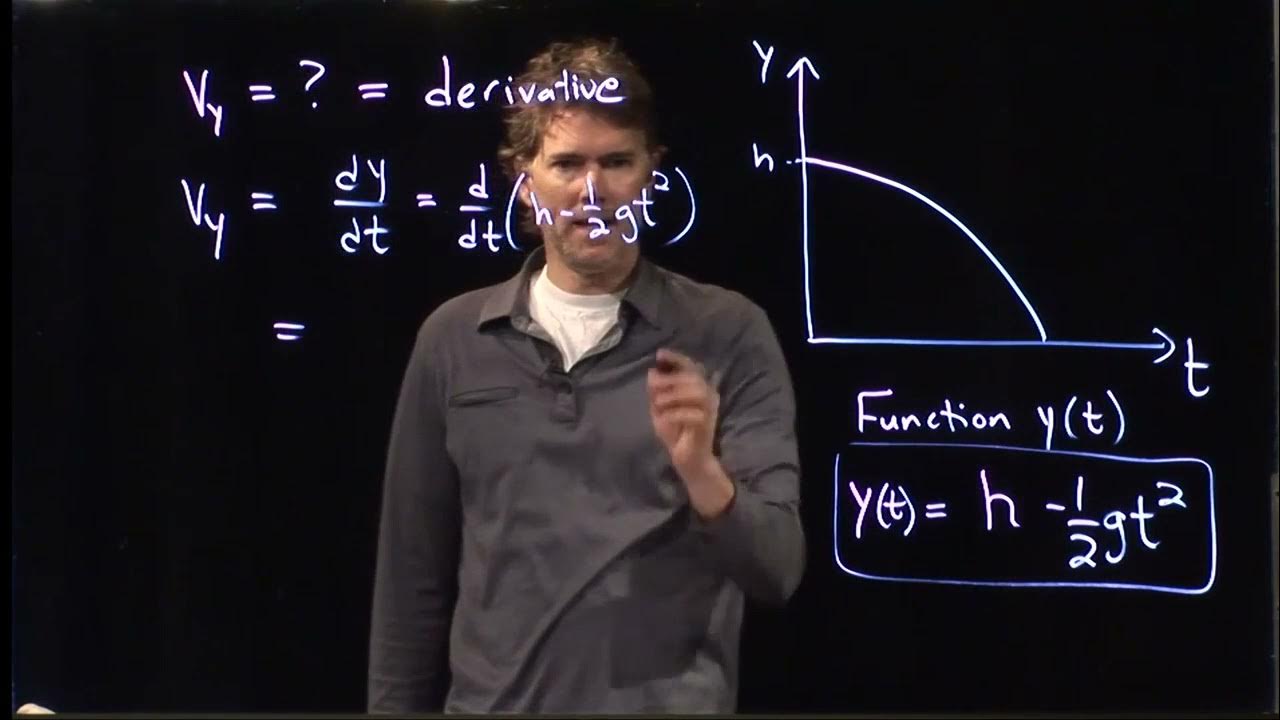Equations of Motion in Physics Made Easy - A Step-by-Step Explanation
TLDRThis lesson aims to demystify the equations of motion for constant acceleration, emphasizing their practical applications in physics. The instructor breaks down the intimidating equations, highlighting two core equations derived from basic calculus. The lesson focuses on understanding these equations' structure and logic through unit analysis and graphical representation, ensuring comprehension before delving into their formal derivation in the next lesson. The goal is to equip students with a solid foundation to solve a variety of motion problems, emphasizing the importance of recognizing constant acceleration in real-world scenarios.
Takeaways
- 📚 The lesson aims to familiarize students with equations of motion, emphasizing they may seem intimidating but are easier to understand when broken down.
- 🔑 The core focus is on understanding the equations' purpose and logic before deriving them in a subsequent lesson, highlighting the importance of comprehension over mere memorization.
- 🚫 The equations of motion discussed are applicable only under conditions of constant acceleration, making it crucial to identify variable acceleration situations where these equations do not apply.
- 📉 The instructor clarifies that while there are five equations of motion presented, the first two are fundamental, derived from basic calculus, and the others are derived from these core equations.
- 🔄 The equations are initially introduced with a 'missing quantity' column to illustrate which variables are not included in each equation, aiding in problem-solving when certain information is unknown.
- 🔶 The variables X, X₀, V, V₀, a, and T are defined in the context of motion, with X₀ and V₀ representing initial position and velocity, and a representing constant acceleration.
- 📈 The lesson explains the physical meaning of the equations, using the concepts of velocity increasing linearly with time under constant acceleration, leading to a quadratic position function over time.
- 📊 A graphical representation is used to demonstrate the relationship between constant acceleration, linear velocity increase, and quadratic position change over time.
- 🧩 The instructor pieces together the equations by showing the logical and mathematical consistency between them, such as deriving velocity from position and acceleration from velocity.
- 🔍 The importance of understanding units in physics is emphasized, ensuring that each term in the equations contributes to a consistent unit of measurement, particularly meters per second for velocity.
- 📚 The lesson concludes with a preview of the next lesson, where the equations will be derived from first principles, reinforcing the idea that understanding the derivation deepens comprehension and application of the equations.
Q & A
What is the main goal of the lesson in the provided script?
-The main goal of the lesson is to introduce and explain the equations of motion, particularly focusing on their application with constant acceleration, and to demystify their intimidating appearance by breaking them down for better understanding.
Why are the equations of motion intimidating to some students?
-The equations of motion can be intimidating because they often appear complex and abstract. The instructor aims to break down this intimidation by showing how easy they are to understand and apply in practical situations.
Outlines
📚 Introduction to Equations of Motion
The instructor begins by setting the stage for a lesson on equations of motion, emphasizing that while these equations may seem daunting, they will be simplified for understanding. The lesson's goal is not to derive the equations but to familiarize students with them and ensure they make sense conceptually. It's mentioned that the equations are applicable in scenarios with constant acceleration, and their practical applications will be explored in future lessons, including horizontal motion, vertical motion under gravity, and curved path motion. The instructor also clarifies that while there are five equations of motion, the first two are fundamental and derived from basic calculus principles, with the rest being variations of these core equations.
🔍 Breakdown of Key Variables in Motion Equations
This paragraph delves into the specific variables involved in the equations of motion, such as position (x), initial position (x₀), acceleration (a), time (t), final velocity (v), and initial velocity (v₀). The lesson elaborates on how these variables interact within the equations.
Mindmap
Keywords
💡Equations of Motion
💡Constant Acceleration
💡Derive
💡Initial Conditions
💡Final Conditions
💡Displacement
💡Velocity
💡Acceleration
💡Gravitational Acceleration
💡Prototype
Highlights
The lesson aims to demystify equations of motion, making them accessible and understandable.
Equations of motion are primarily used for scenarios with constant acceleration.
The instructor emphasizes that these equations are not derived in this lesson but will be in the next.
Core equations are derived from first principles and basic calculus, forming the foundation for other equations.
The importance of understanding the practical value of these equations is stressed, including their use in horizontal and vertical motion.
The concept of 'missing quantity' in equations is introduced to tackle problems with unknown variables.
Transcripts
Browse More Related Video

Deriving the Kinematic Equations of Motion w/ Constant Acceleration in Physics - [1-2-13]

01 - Motion with Constant Acceleration in Physics (Constant Acceleration Equations)

Differential Equations with Velocity and Acceleration (Differential Equations 7)

AP Physics 1: Rotational Kinematics Review

Equations of Motion

Kinematic Equations in One Dimension | Physics with Professor Matt Anderson | M2-04
5.0 / 5 (0 votes)
Thanks for rating: